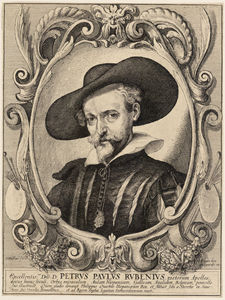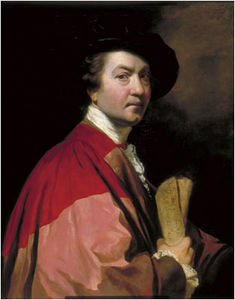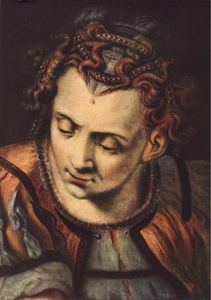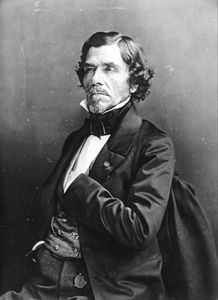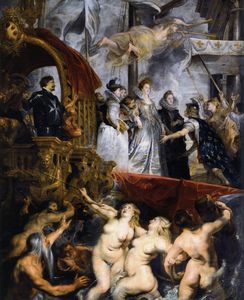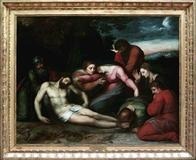Peter Paul Rubens Critical Reception
- Full Name:
- Peter Paul Rubens
- Short Name:
- Rubens
- Date of Birth:
- 28 Jun 1577
- Date of Death:
- 30 May 1640
- Focus:
- Paintings, Drawings
- Mediums:
- Oil, Wood, Other
- Subjects:
- Figure, Animal
- Museums:
- Rubenshuis
- Art Movement:
- Baroque
- Hometown:
- Siegen, Germany
- Peter Paul Rubens Critical Reception Page's Content
- During Life
- After Death
Peter Paul Rubens During Life
Winckelmann: "Rubens is the glory of art, of his school, of his country, and of all coming centuries; the fertility of his imagination cannot be overrate; he is correct in his design, magnificent in his drapery; and he must be looked upon as the great model for chiaroscuro, although in this branch he may e termed fanciful, but he has not sacrificed to the goddesses of beauty (Horae) and the Graces."
Joshua Reynolds says "His horses are perfect in their kind; his dogs are of the strong Flemish breed, and his landscapes the most charming pictures of Brabantine scenery, in the midst of which lay his seat of Steen. As a portrait painter, although less refined than Van Dyck, he shows that eminent master the way, and his pure fancy subjects, as the Garden of Love and the Village Fete, have never been equaled. As Mrs Jameson so justly remarks, "Rubens is the most popular because the most intelligible of painters."
Peter Paul Rubens After Death
From Colin Eisler, "Masterworks in Berlin: A City's Paintings Reunited":
"Before Rubens, no Western artist of equally great talent had been as well born, as well educated, as well mothered, as well placed, or as widely and powerfully patronized..."
"The first key Flemish apostle of Renaissance grandeur had been the far earlier Antwerp master Frans Floris, and Rubens doubtless turned to his achievements for initial guidance..."
"Among major painters, only Giorgio Vasari, Sir Joshua Reynolds, and Eugéne Delacroix may have known as much about art and its history as Rubens did. Significantly, both the English and the French master placed the Fleming among their very favorites, each having been deeply influenced by Rubens's re-creation of the visual triumphs of Renaissance Venice, Mantua, and Rome, along with those of classical antiquity. Despite great erudition Rubens retained his individuality throughout a long and vastly productive career, for, above all, he was a supreme master of the imagination..."
"This painter possessed of protean gifts proved to be an effective ambassador, scholar, courtier, humanist, lover and family man, classicist, architect, knight, numismatist, collector of antiquities, print designer, agent-connoisseur-adviser, pageant master, and fervent Roman Catholic. Equipped with rare energy, he would be up by 4:00 A. M. and could paint while dictating a letter and carrying on a conversation with a visitor, all at the same time.
The artist was blessed with rare gifts of organization and a sense for realism and idealism. Rubens's creative, inventive response to conservative theology and to classical values validated the vast pictorial cycles demanded by his patrons. These filled Antwerp's new Jesuit church and Charles I's new banqueting hall ceiling at Whitehall.
Twenty-four huge canvases of Marie de' Médicí's life were painted for the Palais du Luxembourg, and Philip IV's Torre de la Parada contained 112 mythological subjects designed by Rubens that were largely executed by his colleagues. The dramas of splendid triumphal entries and eucharistic events were celebrated with sketches, etchings, and tapestries as well as vast paintings, for Rubens possessed an unrivaled capacity for commemorating occasion and institution. Affirmation lies at the center of his art; he could accord as much grandeur to the celebration of Flemish peasant life as to the splendor of Marie de' Médicí's Parisian court."
"He was that rarest of phenomena, at once a popular painter and an artist's artist, as close to Constable, Delacroix, or Renoir as to the painters of his own day. A handsome man, gracefully mannered, with beautiful wives and children, Rubens enjoyed harmony's enviable balance of opposites. While he was profoundly romantic, he was equally rooted in the classical tradition; his Roman Catholic orthodoxy never conflicted with his passion for antiquity. Venus and Virgin are almost interchangeable in the Fleming's art..."
"The Fleming was a shrewd judge of character and talent, and maintained a large, efficient, successful atelier in his little palace of an Antwerp townhouse. Innumerable "Rubenses" that began with his design and ended with a few of his brushstrokes artfully placed where they counted most streamed from Rubens's very profitable workshop. The artist was also active in collaboration with men like "Velvet" Brueghel, Anthony van Dyck, Frans Snyders, and Daniel Seghers. His status as court painter freed Rubens from registering assistants with the guild, paying taxes, or subscribing to guild rules, all of which contributed to his prosperity."

